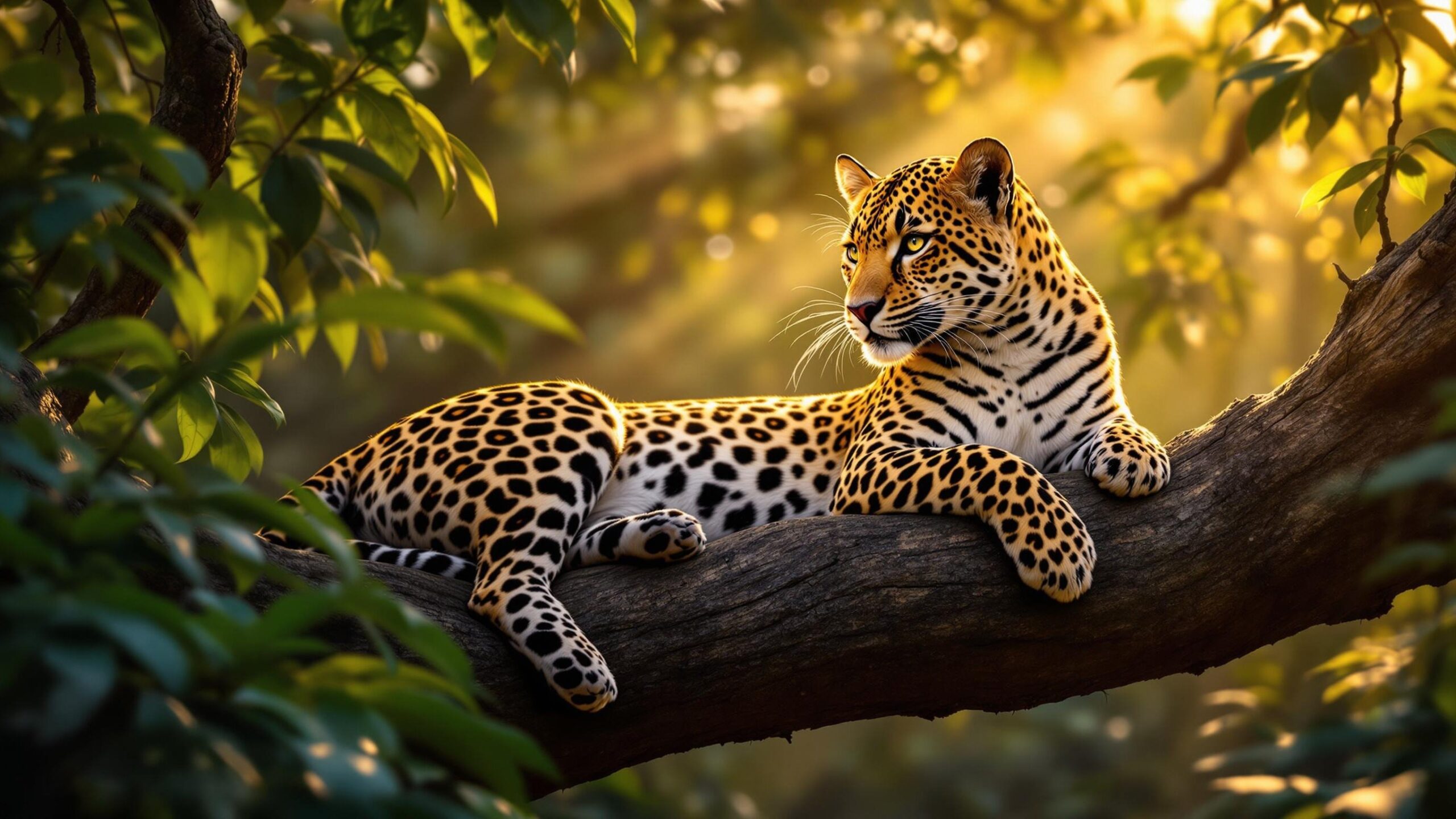Leopards: The Stealthy Shadows of the Wild That Rule from the Trees to the Ground
In the flickering twilight of the African savanna, a spotted ghost silently weaves through the tall grass. Muscles ripple beneath its golden coat as it climbs a tree with supernatural ease, dragging prey twice its size with barely a sound. It is the leopard—an enigma cloaked in rosettes, an apex predator that has conquered forests, deserts, and mountains. Leopards are not just one of the world’s most beautiful big cats—they are among the most adaptable, elusive, and mysterious animals ever to stalk the wilderness. From the humid jungles of Sri Lanka to the snowy slopes of Central Asia, leopards have carved out a domain that stretches wider than any other big cat, and they have done so while rarely being seen. To understand leopards is to glimpse into the heart of wild nature itself—a realm of stealth, survival, and sublime power.
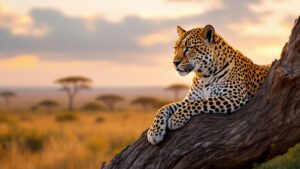
African Leopard
African Leopard: Elusive Ghost of the Savannah Few animals command as much admiration and intrigue as the African leopard, known scientifically as Panthera pardus pardus. A master of stealth and survival, this big cat reigns as one of Africa’s most iconic yet mysterious predators. Sleek, spotted, and supremely adaptable, the African leopard roams a range of habitats across the continent—from sun-scorched savannahs to dense rainforests, misty highlands, and rocky deserts.
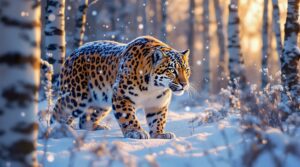
Amur Leopard
The Amur Leopard: A Ghost of the Forest In the snow-laced forests of the Russian Far East roams one of the most elusive and critically endangered big cats on Earth—the Amur leopard (Panthera pardus orientalis). Known for its ghost-like ability to vanish into the wilderness, this rare subspecies of leopard is not just a symbol of the wild’s resilience but also evidence of nature’s incredible beauty and adaptability. The Amur

Arabian Leopard
Arabian Leopard: The Elusive Jewel of Arabia Deep within the craggy mountain ranges and arid wilderness of the Arabian Peninsula prowls a predator so elusive that it has become the stuff of legend. The Arabian leopard (Panthera pardus nimr) is not only the smallest and rarest of all leopard subspecies, but also one of the most critically endangered big cats on Earth. With fewer than 200 individuals estimated to remain

Black Panther
Black Panther: Nature’s Elusive Shadow In the misty forests of Southeast Asia, the dense jungles of Africa, and the lush landscapes of South America, a shadowy figure moves silently through the undergrowth. With piercing eyes, graceful movements, and a coat as dark as midnight, this rare and mysterious creature has long captivated the human imagination. Known collectively as the Black Panther, these animals are not a distinct species, but rather
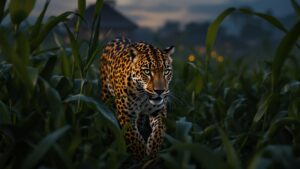
Indian Leopard
Indian Leopard: The Ghost of the Jungle The Indian leopard (Panthera pardus fusca) is one of the most elusive and adaptable big cats roaming the wild landscapes of the Indian subcontinent. A subspecies of the leopard, it is known for its striking golden coat adorned with dark rosettes, intense amber eyes, and a reputation for mystery. Despite being highly adaptable and widespread, the Indian leopard remains a misunderstood predator—often seen
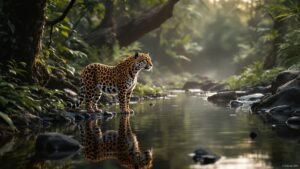
Javan Leopard
Javan Leopard: The Vanishing Ghost of Java’s Forests Deep within the mist-covered peaks and humid forests of Indonesia’s most populous island, a rare and mysterious predator prowls—the Javan leopard. Known scientifically as Panthera pardus melas, this secretive subspecies of leopard is as elusive as it is endangered. As one of the last apex predators on the island of Java, the Javan leopard holds a unique and fragile position within its

Sri Lankan Leopard
Sri Lankan Leopard: The Secret King of the Island Jungle In the shadowy forests of Sri Lanka, where ancient trees sway under monsoon rains and mist curls over the mountain ridges, roams a creature both regal and reclusive—the Sri Lankan leopard. Scientifically known as Panthera pardus kotiya, this apex predator is not only the top carnivore of the island but also one of the most enigmatic big cats in the
The Leopard’s Signature: Camouflage, Power, and Solitude in a Single Frame
The leopard, scientifically known as Panthera pardus, is a member of the famed Panthera genus, which also includes lions, tigers, and jaguars. What sets the leopard apart is not sheer size—it is smaller than the lion and tiger—but its unmatched versatility. A full-grown male can weigh between 80 to 200 pounds, and yet it can haul prey three times its weight up into trees to avoid scavengers. Leopards are instantly recognizable by their golden-yellow coats adorned with distinctive rosette patterns, which act as camouflage in varied terrains. Their lean yet powerful builds, long tails for balance, and retractable claws make them perfectly suited for both terrestrial and arboreal hunting. Leopards are solitary by nature, preferring to hunt and live alone, only coming together to mate or during a mother’s care for her cubs.
Their senses are sharply tuned for nocturnal activity. Acute hearing, exceptional night vision, and a stealthy gait allow them to approach prey undetected. Unlike lions that rely on group coordination or cheetahs that use raw speed, leopards are ambush predators. They wait in silence, strike with lightning precision, and disappear before the forest can even register the attack.
African Leopards: Masters of the Continent’s Diverse Landscapes
The most widespread and studied leopard subspecies is the African leopard (Panthera pardus pardus). From the steamy rainforests of the Congo to the dry brushlands of the Kalahari, these cats thrive in a staggering variety of environments. Their behavior shifts depending on habitat: in savannas, they might rest in trees and hunt gazelles, while in forests, they stalk through undergrowth for monkeys and bush pigs. One of their most fascinating traits is their ability to co-exist near human settlements while rarely being seen, a behavior that has made them central figures in African mythology—often as spirits, tricksters, or mysterious guardians of the night.
The African leopard’s role in the ecosystem is critical. As apex predators, they regulate herbivore populations, indirectly shaping vegetation patterns and maintaining balance. By caching their kills in trees, they even contribute to feeding scavengers that can’t access fresh kills otherwise. Despite this, human conflict and habitat encroachment have placed many populations under pressure, making conservation efforts more crucial than ever.
Indian Leopards: Survivors in the Most Populous Nation on Earth
The Indian leopard (Panthera pardus fusca) presents one of the most astonishing stories of adaptability in the animal kingdom. Found across the Indian subcontinent, these leopards navigate a mosaic of habitats—from the Himalayan foothills to scrublands, agricultural fields, and even urban fringes. In cities like Mumbai, leopards have adapted to life on the edge of the metropolis, using green corridors and national parks embedded within urban sprawl. Here, they share their range with tigers and humans, yet they remain unseen for days or weeks, a confirmation to their elusive behavior. Despite their camouflage, conflicts arise. Leopards are often caught on camera traps in urban neighborhoods, leading to media panic and retaliatory killings. But in many rural areas, they are revered or tolerated, especially when they prey on feral dogs or keep herbivore populations in check. Conservation in India is thus a balancing act—ensuring safe spaces for leopards while educating the public about coexistence. Their future hinges on awareness, ecological planning, and the respect that their ghost-like presence demands.
Arabian Leopards: The Vanishing Cats of the Desert Mountains
One of the rarest and most endangered leopard subspecies is the Arabian leopard (Panthera pardus nimr), found in the rocky, arid landscapes of the Arabian Peninsula. With fewer than 200 individuals remaining in the wild, primarily in Oman and possibly parts of Yemen and Saudi Arabia, these leopards represent a fragile thread of survival. Smaller and lighter than their African and Indian relatives, Arabian leopards have adapted to dry climates and mountainous terrain, hunting ibex, rodents, and birds in isolated, inhospitable ranges.
The challenges they face are immense. Habitat loss, poaching, and a decline in prey have decimated their numbers. Conservation programs led by local governments and global NGOs are racing against time to protect these leopards through captive breeding, protected areas, and cross-border cooperation. Their plight is a stark reminder of how quickly even the most resilient species can be pushed to the brink without vigilant stewardship.
Sri Lankan Leopards: Island Royals with Nowhere to Hide
Endemic to the teardrop-shaped island of Sri Lanka, the Sri Lankan leopard (Panthera pardus kotiya) is a unique subspecies adapted to life in tropical forests and central highlands. As the island’s apex predator, it plays a dominant ecological role with no competition from other big cats. Unfortunately, that status also puts it in direct conflict with human activities like tea plantation expansion, illegal hunting, and deforestation.
This leopard is stockier than some of its mainland cousins and is often seen during daylight hours in Yala National Park and other reserves, making it a major draw for wildlife tourism. This visibility is a double-edged sword—it provides funding and awareness for conservation but also risks disturbing their natural behaviors. Long-term survival will depend on maintaining forest corridors, minimizing human-wildlife conflict, and ensuring that tourism remains sustainable and respectful.
Persian Leopards: Ghosts of the Mountains and Warriors of Resilience
Also known as the Caucasian leopard, the Persian leopard (Panthera pardus tulliana) is a cold-climate specialist, dwelling in the mountainous regions of Iran, Turkey, the Caucasus, and parts of Central Asia. These leopards are among the largest of their species, needing vast territories to hunt wild goats, deer, and smaller mammals across steep, rugged terrain. Persian leopards are emblematic of the power and loneliness of true wilderness. Their survival has been tested by decades of political instability, habitat fragmentation, and illegal killing, yet conservation efforts in places like Armenia and Iran have begun to show promise. Transboundary initiatives, rewilding programs, and the creation of leopard corridors are offering glimmers of hope. Every camera trap photo of a Persian leopard in the wild feels like a minor miracle—proof that persistence, both feline and human, can turn the tide.
Javan Leopards: Tropical Phantoms Fighting for Forests
The Javan leopard (Panthera pardus melas) is found only on the Indonesian island of Java and is critically endangered. Adapted to the island’s dense rainforests, these leopards are dark-coated, sometimes appearing almost melanistic—an adaptation thought to be linked to their shadowy jungle habitat. With Java’s forests being cleared at a relentless pace, these leopards are squeezed into increasingly fragmented habitats, putting genetic diversity and population sustainability at risk.
Conservation efforts are complicated by the island’s high population density, agricultural demands, and infrastructural expansion. Despite these challenges, Indonesian authorities and NGOs are working to preserve protected forest zones, enforce anti-poaching laws, and engage local communities. The Javan leopard’s fate remains uncertain, but it is one of the planet’s most striking examples of how isolation can produce unique forms of beauty—and vulnerability.
Amur Leopards: Snowbound Spirits on the Edge of Extinction
With their long legs, thick fur, and snowy camouflage, Amur leopards (Panthera pardus orientalis) inhabit one of the most inhospitable environments on Earth—the temperate forests of the Russian Far East and northern China. Once thought to be functionally extinct, these leopards now number over 100 in the wild thanks to heroic conservation efforts. They are the most endangered big cat on the planet but also one of the most inspiring comeback stories in wildlife history. Amur leopards navigate deep snow and extreme cold in pursuit of deer and hares, often covering large distances through mountainous forests. Their solitary nature and harsh environment have made them hard to study, but ongoing collaring projects and camera trap networks are shedding light on their behaviors. Russia’s establishment of the Land of the Leopard National Park, along with anti-poaching units and international collaboration, has become a model for big cat recovery. Every new cub born in the wild is a step toward reclaiming what was almost lost.
Black Leopards: Nature’s Illusionists Hidden in the Shadows
Occasionally, the leopard’s familiar rosettes disappear entirely beneath a veil of black fur. These melanistic leopards—often called black panthers—are not a separate species but a genetic variation caused by excess melanin. Found primarily in Southeast Asia and parts of Africa, these leopards still have the characteristic spots, but they’re only visible under certain lighting. Their mystique has made them legendary figures in folklore and popular culture.
Black leopards thrive in dense forests where their darker coats provide an advantage in stalking prey. Because of their rarity and secrecy, sightings are often met with disbelief or awe. Recently, high-resolution camera traps in India and Kenya have captured stunning footage of these elusive cats, reigniting global fascination. They are living proof that nature still has secrets left to reveal.
Following the Footsteps of the Leopard Through Wild Worlds
To study leopards is to peer into one of evolution’s greatest success stories. Few predators are as geographically diverse, behaviorally adaptable, or visually captivating. Whether pacing through snowy mountains, lurking in jungle shadows, or navigating city edges, leopards represent nature’s capacity for survival, stealth, and silent strength. They are not just predators—they are symbols. Of wilderness, of balance, of the fragile beauty of life that flourishes when ecosystems remain intact.
Each leopard subspecies brings its own chapter to this incredible story, from the snowbound Amur to the desert-dwelling Arabian, from the Sri Lankan forest phantom to the urban Indian ghost cat. They remind us that even the most powerful creatures are vulnerable—and that our choices, policies, and protections matter immensely. The world of leopards is not just one of teeth and claws, but of interconnectedness, of ecological roles and delicate balances. Let this be an invitation. Explore their forests, their myths, their ranges. Dive into the stories of each subspecies. Learn how you can help protect them. The leopards are watching, waiting—not just in the wild, but in our imagination, where they’ve always lived as icons of mystery, elegance, and primal grace.

